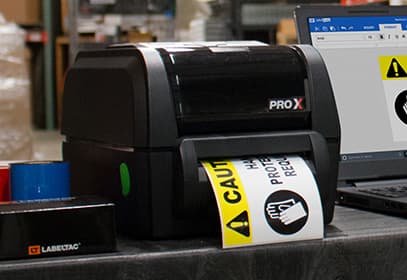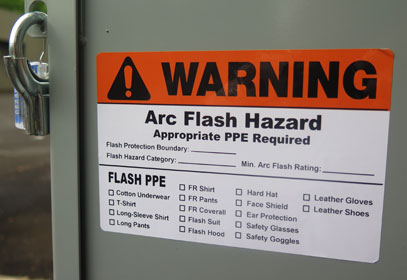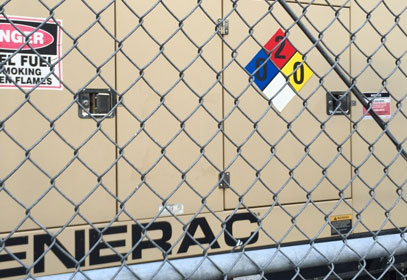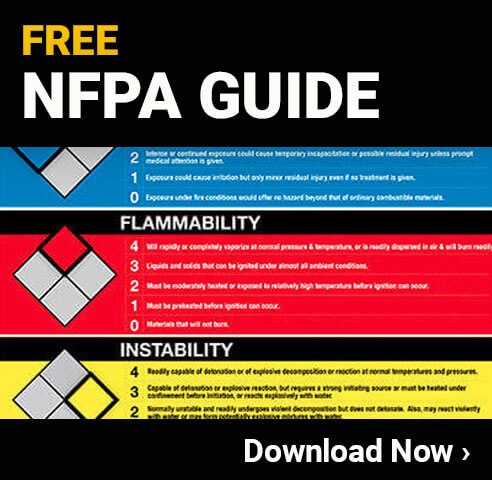Resources
What began as a necessity for standardizing fire sprinklers in the late 19thth century has blossomed into a global organization advocating for fire and electrical safety.
The National Fire Protection Association began offering classroom resources to elementary students and encouraging local solutions for wildfire safety. Now, the membership led organization publishes criteria for healthcare facilities, manufacturing facilities, construction sites, and countless other organizations. The NFPA has been helping save lives and reduce losses due to fires since 1896.
At its core, NFPA is a codes and standards organization, responsible for some of the most important industry standards, such as:
- The National Electrical Code: NFPA 70, the National Electrical Code, is the most widely adopted code in the world. The NEC, approved by ANSI and referenced by OSHA, is the benchmark for the safe installation of wiring and electrical equipment.
- NFPA 70E: The Standard for Electrical Safety in the Workplace standardizes safe work practices for protecting employees and reducing exposure to electrical hazards.
- NFPA 704: As the Standard System for the Identification of the Hazards for Materials for Emergency Response, this system uses the NFPA hazard diamond to communicate hazards and their severity to emergency responders.
These are just a few examples of the over 300 consensus codes and standards published by NFPA. These standards establish criteria for building, processing, design, service, and installation based off rigorous research, all with the objective to minimize the risks associated with fire.
At Creative Safety Supply we are here to help organizations keep their employees safe and their workspaces compliant. We have gathered expert information on NFPA related subjects, you’ll find the solutions you need to eliminate fire hazards and improve electrical safety.
Getting Started
- Confused about agencies and acronyms? Check out our safety glossary.
- Want to learn more about preventing fires? Explore our fire safety resources.
- Have a question about NFPA? Browse our NFPA Q&A hub.
- Ready to get started? Shop our selection of fire safety supplies.
NFPA Articles
NFPA 855: The Installation of Stationary Energy Storage Systems
NFPA 855 is an essential standard to follow to maintain worker safety while around stationary energy storage systems. …
Improving Workplace Electrical Safety
Choosing to improve worker knowledge and equipment for electrical safety creates a much safer workplace and improves overall productivity. …
NFPA 25: Standards for Fire Protection Systems
Learn about the updates made to NFPA 25 in 2020 as well as the essential components of fire protection and prevention systems that keep employees safe. …
Fire Safety in the Workplace
Fire safety is essential in every workplace. These are the principles that will help your facility prepare for fires and prevent them from occurring in the first place. …
National Electrical Code (NEC)
The National Electrical Code (NEC) is the ANSI/NFPA-approved standard for safe electrical installation. The NEC is revised once every three years, with the most recent changes in 2017. …
Arc Flash Label Requirements [2018 Updates]
Arc flash hazard labels must be placed on any piece of electrical equipment where workers might need to perform work while the equipment is still energized. …
NFPA 99: Understanding the Health Care Facilities Code
NFPA 99 standards are built specifically to ensure safety from fire danger in healthcare facilities. Learn how to stay in compliance and protect your facility from fire hazards with this overview of the NFPA 99. …
NFPA 70E [Workplace Electrical Safety]
NFPA 70E was created to help prevent injuries to workers in energized environments. If you’re working with live energy, you need to know this safety standard to stay OSHA compliant. …
A Guide to Pipe Marking Standards
For most industries, abiding by ASME/ANSI pipe marking standards is sufficient for staying safe and OSHA compliant. Some workplaces, though, are required to comply to more unique pipe marking standards due to the nature of the substance the pipes contain. …
What is a thermal printer? (direct transfer)
Thermal printers are essential to printing in an industrial setting. Learn about the two types of thermal printing to determine which one suits your facility’s needs. …
Arc Flash Labeling (Updated)
Arc Flashes are one of the most dangerous accidents that can happen in a facility. Learn how to keep your facility safe and incident-free through proper labeling. …
Understanding the NFPA 704 Diamond Labeling System
Learn how to properly label hazardous materials following NFPA 704 labeling standards. …
NFPA Questions and Answers
What Does a Hazard Diamond Sign Mean?
Hazard diamonds, also known as hazard warning signs or diamond-shaped placards, are used to communicate the potential hazards of chemicals, materials, or equipment. These signs are typically found in workplaces, such as industrial facilities or laboratories, where hazardous substances are present. Hazard diamonds are made up of four colored panels that are arranged in a diamond… …
What do the colors represent on the NFPA diamond?
The NFPA diamond is one of the most iconic safety symbols in many different industries. Anywhere that works with potentially dangerous chemicals or materials will have seen this diamond. Even those who don’t work in these types of industries will likely have seen them on the backs of semi-trucks that are transporting dangerous solutions. The… …
What is the NEC?
NEC stands for the National Electrical Code. It is a set of codes developed and maintained by the National Fire Protection Association, or NFPA. The NEC is also known as NFPA 70. It is the set of standards that are used for safe electrical design, installation, and inspection. The goal behind the NEC is to… …
What is the NFPA?
NFPA stands for the National Fire Protection Association. It is a nonprofit organization that was established in 1896 with the goal of eliminating death, injuries, property damage, and other issues related to fire and electrical related dangers. The association is perhaps best known for the various codes and standards that they publish to help accomplish… …
Are NFPA and ISO standards the same?
The NFPA (National Fire Protection Association) and the ISO (International Organization for Standardization) are two of the largest and best-known entities when it comes to creating standards that are used by businesses around the world. While they are certainly similar in many ways, these two organizations are not the same. What is the NFPA? The NFPA is… …
Where should NFPA diamonds and labels be?
If your company is using the NFPA labeling standards, it is important to take steps to ensure you are doing it properly. This includes understanding how to get the proper labels that you need, and knowing where they should be used. This brief article will outline the standards and best practices on where NFPA labels… …
Who enforces NFPA standards?
The NFPA is one of the best-known entities in the world when it comes to setting safety standards. Specifically, the NFPA 70E standards have been adopted by millions of companies for improving electrical safety, chemical safety, and other safety areas in the workplace. This leads many people to ask about who enforces NFPA standards, and… …
What are the NFPA standards for fire extinguishers and fire sprinklers?
The National Fire Protection Association publishes many different safety standards, including several focused on fire extinguishers and fire sprinklers. Almost all employers need to have a qualifying fire safety system in place, which will typically include extinguishers and sprinklers. Making sure these essential tools are kept in proper working order and in compliance with best… …
How can I be certified by the NFPA?
The NFPA puts out a lot of different safety standards that offer information on how to keep employees safe in the workplace. In addition to these types of standards, they also offer a variety of training courses and certifications that people can attain. These certifications will serve as proof of an understanding of a specific… …
What PPE is required by the NFPA?
The NFPA has written safety standards for a wide range of different hazards. Part of these standards is ensuring employees have access to the right personal protection equipment for a given situation. There are many different types of PPE available today so employees can get significant protection from almost any type of danger. Facilities that… …
What is NFPA 70E?
NPFA 70e is one of the most important safety hazards that has been developed by the National Fire Protection Association. It is titled, “NFPA 70E: Standard for Electrical Safety in the Workplace” and covers a wide range of different subjects related to electrical safety. This standard has been around for decades now, but had a… …
How are NFPA labels and diagrams formatted?
The NFPA diamond is one of the most famous and well-recognized safety symbols in the world. Even most people who don’t work with this type of thing have at least seen it on the back of trucks and in other areas. One of the reasons that it has become so popular is because of the… …
How often is NFPA 70E updated?
NFPA 70e is one of the best-known safety standards published by the National Fire Protection Association. It is titled, “Standard for Electrical Safety in the Workplace” and as the title implies, this standard is focused on electrical safety requirements for the employees of facilities. It is most commonly used for companies that have high-voltage machinery… …
How many NFPA codes are there?
The National Fire Protection Association creates and maintains safety standards on a wide range of different subjects. They are best known for the NFPA diamond, which is used as a way to quickly identify the types of hazardous materials in an area. In addition to this, however, they create many other codes that are used… …
How are NFPA standards adopted?
The NFPA safety standards are used by companies around the world because they have been proven effective. Their standards have even been used to create many governmental regulations regarding safety in the workplace. While the current NFPA standards are clearly effective, they can always be improved. Understanding how they develop new standards over time can… …
When are NFPA diamonds required?
The National Fire Protection Association (NFPA) is a private safety organization that is dedicated to helping companies improve safety, especially safety related to fire hazards. In pursuit of this goal, they developed the NFPA diamond, which is a standard way to convey information about hazardous materials is a fast and easy to learn way. These… …
What is the NFPA diamond?
Most people have seen the NFPA diamond, even if they didn’t know that this is what it was called. The NFPA diamond is commonly seen on the backs of semi-trucks that are transporting potentially hazardous materials. This is a type of label that is designed to quickly convey basic information about the materials that are… …
What are NFPA ratings?
The National Fire Protection Association (NFPA) is the group behind the well-known labeling system that uses colored diamonds to alert people to potential hazards. They are commonly seen on shipping trucks and other areas where hazardous materials are present. Part of this labeling system is the numerical rating system that alerts people to the severity… …
When are NFPA labels required?
The National Fire Protection Association, or NFPA, is best known for their labeling standards that are used to identify potential hazards of various materials. They are often seen on the backs of trucks that are transporting these types of materials. The labels are shaped like diamonds and have numbers in them to indicate what type… …
What are the NFPA codes?
The National Fire Protection Association has published over 300 consensus codes and standards that help to minimize the risk of fire in the workplace and other locations. This nonprofit has been around for over a century, and continues to work with companies around the world to improve workplace safety in many ways. Their codes and… …
Are NFPA codes retroactive?
Improvements to workplace safety is an ongoing goal that often proceeds with incremental improvements. As new technologies develop, new standards are made, and more information is gathered, safety organizations like the NFPA will make updates to their codes and standards to help pass on the benefits to all their members. Many people will ask whether… …
What does the NFPA regulate?
The National Fire Protection Association (NFPA) is an organization that is dedicated to the elimination of death, injury, property, and economic loss due to fire, electrical, and other related hazards. This organization was founded back in 1896, and today serves members around the world as a self-funded nonprofit organization. Their focus on fire and electrical… …
Are NFPA standards law?
It can be difficult for companies or agencies to get the funding and commitment that they need to make safety improvement changes. In many cases, the best way to convince the management team that it is necessary is to show them that they need to make changes in order to comply with the law. This… …
Are NFPA labels required by OSHA?
The NFPA 704 code is the labeling system that was developed to identify hazardous materials that are often used in the workplace. It is primarily used by emergency responders, though it is also beneficial for any workplace that can benefit from the information. Given the fact that there are other labeling standards, such as GHS,… …
What does NFPA stand for?
NFPA stands for the National Fire Protection Association. It is a trade association that is based in the United States, but has international members as well. This association creates standards and codes that are used by businesses, local governments, and other organizations to help improve fire safety. NFPA was first formed in 1896 by insurance… …



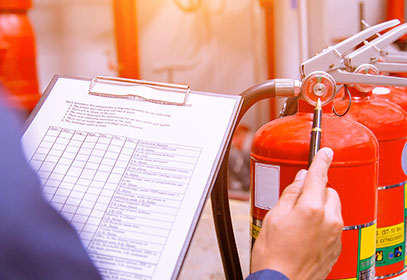
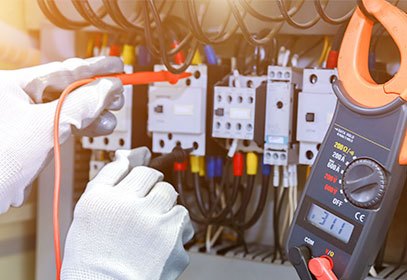
![Arc Flash Label Requirements [2018 Updates]](https://www.creativesafetysupply.com/content/images/articles/arc-flash-labels-th.jpg)
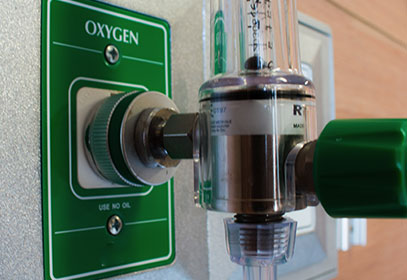
![NFPA 70E [Workplace Electrical Safety]](https://www.creativesafetysupply.com/content/images/articles/nfpa-70e-th.jpg)

